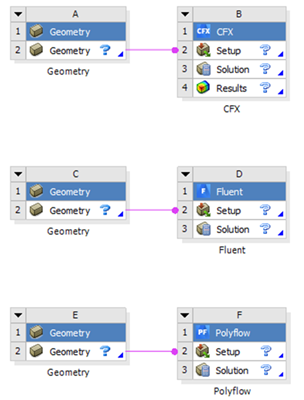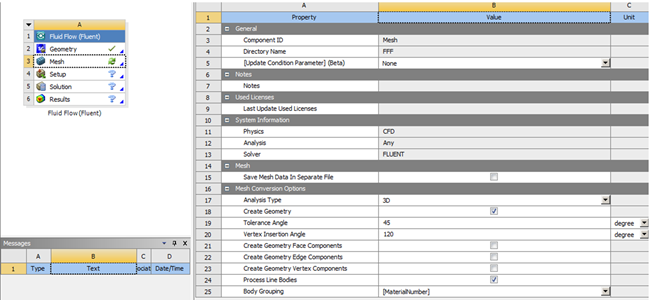The Fluid Flow (Polyflow) systems analyze fluid flows with free surfaces, complex rheology (including non-Newtonian behavior with viscoelasticity), heat transfer, and chemical reactions.
This analysis is configured in Ansys Polyflow.
There are three Polyflow fluid flow analysis systems available in Workbench:
The Fluid Flow (Polyflow) system provides the full simulation capabilities of Polyflow.
The Fluid Flow - Blow Molding (Polyflow) system provides only the application-specific capabilities of Polyflow that are suited to blow-molding simulations.
The Fluid Flow - Extrusion (Polyflow) system provides only the application-specific capabilities of Polyflow that are suited to extrusion simulations.
Use a Polyflow, Blow Molding (Polyflow), or Extrusion (Polyflow) fluid flow analysis system to apply a computational mesh to a geometry within Workbench, then use Polydata to define pertinent mathematical models (for example, Generalized Newtonian, Viscoelastic, and so on), select materials, define boundary conditions, and specify solution controls that best represent the problem to be solved. Polyflow solves the mathematical equations, and the results of the simulation can be displayed in CFD-Post for further analysis (for example, contours, vectors, and so on).
For detailed information on working with Polyflow, see the online help in Polyflow, the Polyflow User's Guide, and the Polyflow in Workbench User's Guide.
SpaceClaim mesh transfer to the Mesh cell of the Fluid Flow systems (Fluent, CFX, and Polyflow) now uses a .uns file to handle the import.
The recommended method of transferring SpaceClaim meshing is to connect a Geometry component system to the Setup cell of either a Fluent, CFX, or Polyflow component system, instead of using the Fluid Flow system.

If you choose to use the Fluid Flow system, enable meshing in SpaceClaim then display the Properties pane for the Fluid Flow system Mesh cell. Control the import using the mesh conversion options.



